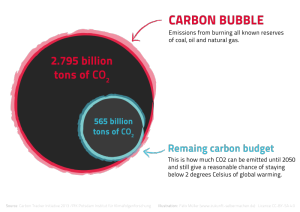4 Steps to Being a Climate Change Leader - And Still Save Money

The dramatic drop in oil and gas prices is good news for business. But does this mean that energy efficiency is no longer a top priority? The bonus of low energy prices is likely to last little more than a year or two. In 2015 expect carbon emissions and climate change to be back on the agenda as international agreements are reached, new legislation is implemented and carbon reduction targets kick in. Managing the energy and climate change agenda requires both a short and long term perspective.
Climate change will be one of the major business disruptors for the next decades. A company's emissions, how it uses and sources energy and the vulnerability of long term investments, are coming under the spotlight for investors, regulators and consumers. These stakeholders influence product demand, reputation, costs, and for listed companies, share price can be affected.
'Investors need to be able to model and understand the global implications of climate change on their investments. FTSE creates indices which weight constituent stocks according to their carbon intensity' - David Harris, Director of ESG, FTSE
Companies that develop a proactive strategy to become climate change leaders are future-proofing their organisations.
The good news is that many energy efficiency opportunities demand minimal capital outlay and offer impressive rates of return, often offering paybacks of less than 2 years. Look at it another way: what bank offers you 50% interest rate?
'Approximately $20m was spent on greenhouse gas reduction projects between 2007 and 2012. Combined savings are now contributing $50 million annually to BG Group'.
Each company is unique in the risks they face and the direct and indirect effects throughout the supply chain. While each solution must be tailored to the individual challenges, for every company there are four clear steps to becoming a leader in energy and climate change management:
- Develop the business case for change and methods to achieve success with buy-in across the organisation;
- Identify the low cost, high impact opportunities through energy audits and cashflow evaluations;
- Set targets, develop processes and tools to achieve your objectives, and;
- Report emissions and performance.
2015 offers the opportunity to enjoy reduced costs now from lower energy prices and also plan for the future. Is it time to look at your strategic plans, the resilience of your assets and see where money can be saved?
About the Author;

James Garvie recently joined the AWN team from a $70bn integrated energy company where he was Group Environmental Engineering Manager responsible for mitigating strategic environmental risks and delivering environmental improvements across 25 countries of operation.
Contact: James.Garvie@awnconsulting.com
